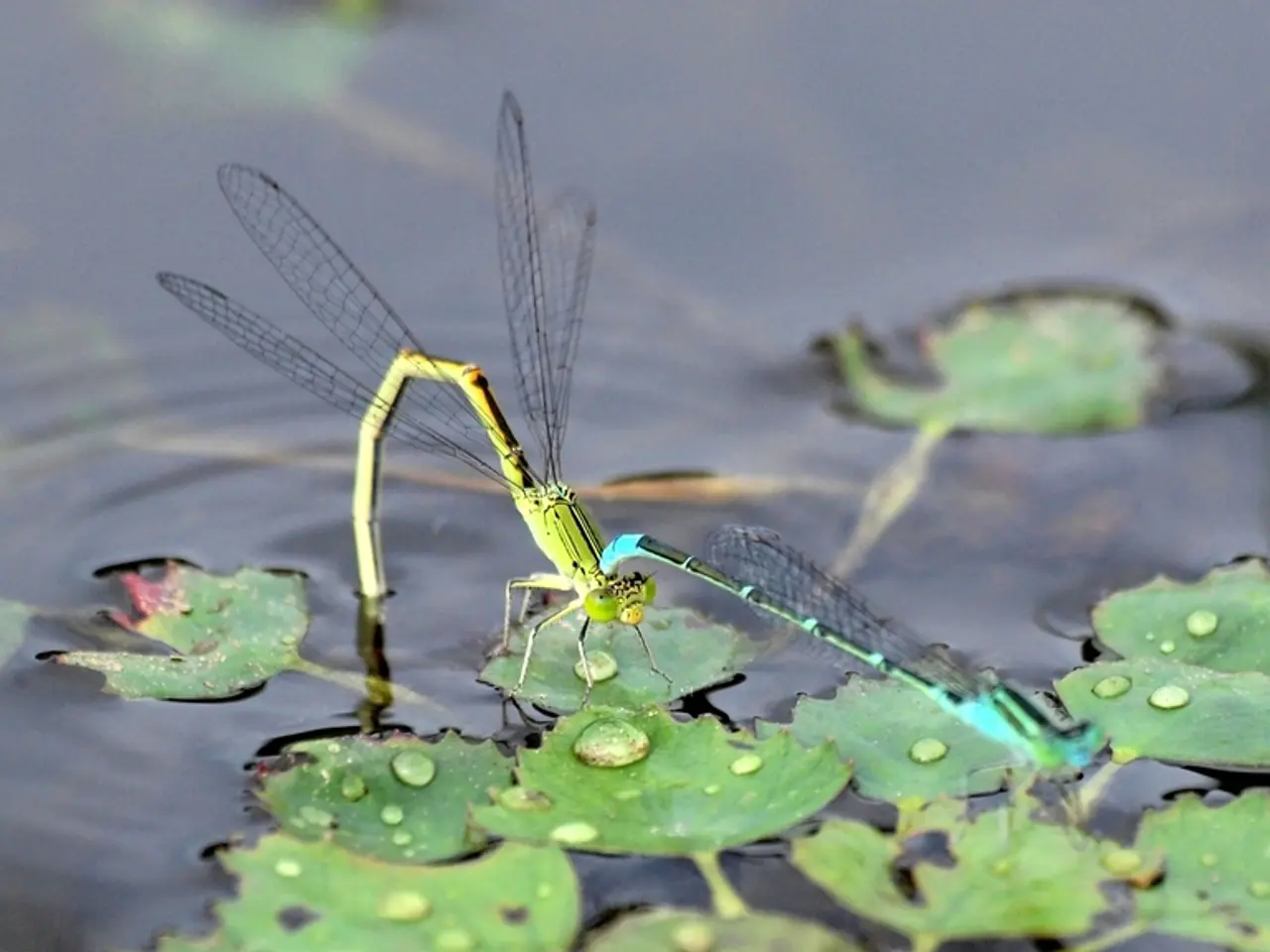Alien lakes on Saturn's moon Titan may be producing cell-like formations
In a groundbreaking discovery, NASA scientists have proposed that under Titan's unique conditions, cell-like structures known as vesicles could form naturally in the moon's liquid methane lakes [1][2]. These structures, made of bilayers of amphiphilic molecules, are considered crucial steps towards the emergence of life.
Titan, Saturn's largest moon, is a key target in the search for life beyond Earth. Its wild weather acts as a chemistry lab, with solar radiation breaking apart simple molecules in Titan's atmosphere, allowing them to recombine into complex organics [1]. This process could potentially lead to the formation of vesicles.
The formation of vesicles is thought to occur via sea-spray droplets produced when methane raindrops splash into the lakes. These droplets and the lake surfaces are coated with layers of amphiphiles. When droplets meet the lake surface, the amphiphile layers merge to form bilayered vesicles enclosing the droplets, which can then disperse throughout the lakes [1][3].
These vesicles, while not living beings themselves, could be protocells: primitive containers that protect and concentrate molecules. The presence of vesicles indicates an increase in chemical order and complexity, conditions viewed as necessary for the origin of life [2].
Studying vesicle formation on Titan is particularly valuable because it represents a biologically relevant process in an environment fundamentally different from Earth's early conditions. This suggests that life beyond Earth might arise from alternative biochemistries, expanding our understanding of where and how life could originate in the universe.
In summary, Titan's vesicles provide a promising model for the origin of life in an alien environment and broaden the scope of astrobiological research beyond Earth-like conditions. The upcoming NASA Dragonfly mission, a drone-like rotorcraft set to launch later this decade, will hop across Titan's surface, analysing the chemistry of dunes, craters, and icy plains. While Dragonfly won't visit Titan's lakes directly or carry tools to spot vesicles, it will provide valuable insights into Titan's surface and atmosphere, helping us determine whether the building blocks for life are assembling on this distant moon.
References: [1] NASA (2021). Titan's hydrocarbon lakes: A potential origin for life beyond Earth. Retrieved from https://www.nasa.gov/feature/titan-s-hydrocarbon-lakes-a-potential-origin-for-life-beyond-earth [2] McKay, C. P. (2019). The search for life in the universe. Annual Review of Earth and Planetary Sciences, 47, 407–440. [3] Horowitz, B. Z. (2017). The astrobiology of Titan. Annual Review of Astronomy and Astrophysics, 55, 463–503.
- The solar system, beyond Earth, holds potential for life as NASA's discovery of vesicles in Titan's methane lakes could be a step towards life, given that these structures are crucial for the emergence of life in space science.
- The health-and-wellness of mental health is significantly impacted by environmental factors, and understanding the formation of life in the environmental-science field could help us appreciate the interconnectedness of life on Earth and beyond.
- The ongoing space-and-astronomy research, such as the upcoming NASA Dragonfly mission, delves into different conditions like Titan's, expanding our understanding of the emergence of life beyond Earth, and enriching the field of science overall.




